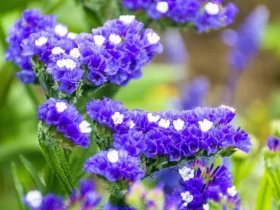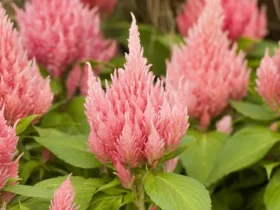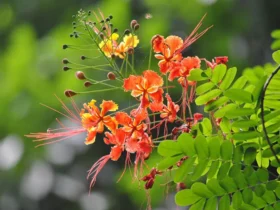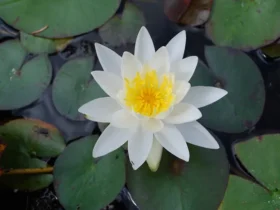With their vibrant colors and captivating beauty, hibiscus flowers have become cherished symbols of tropical landscapes and gardens around the world. These remarkable blooms, known for their diverse forms and enchanting fragrance, offer a visual feast for the senses. In this article, we will delve into the captivating world of hibiscus flowers, exploring their rich history, unique characteristics, and cultural significance.

Botanical Marvels
Hibiscus is a genus of flowering plants in the family Malvaceae, which encompasses hundreds of species and countless cultivars. These versatile plants can be found in various parts of the world, including tropical and subtropical regions. Hibiscus flowers display a wide range of colors, including vibrant reds, oranges, pinks, yellows, and whites, often showcasing contrasting centers and delicate petals.

Distinctive Features
One of the defining features of hibiscus flowers is their large and showy blooms, which can measure several inches in diameter. The petals are often delicately ruffled, giving them an elegant and alluring appearance. The central part of the flower, called the stamen, typically boasts a prominent column of stamens surrounding the pistil, which is often in the shape of a prominent stigma.

Cultural Significance
Hibiscus flowers hold great cultural significance in many parts of the world. In some countries, they are national symbols, representing the beauty and vitality of the region. For example, the hibiscus flower is the national flower of Malaysia and South Korea, symbolizing their rich cultural heritage and natural beauty. In Hawaii, the yellow hibiscus (Hibiscus brackenridgei) is the state flower, representing the Aloha spirit and the island’s warm hospitality.

Traditional and Medicinal Uses
Throughout history, hibiscus flowers have been utilized for various purposes. In traditional medicine, different parts of the plant, such as the flowers and leaves, are often used to prepare herbal teas and infusions known for their potential health benefits. Hibiscus tea, made from dried hibiscus flowers, is renowned for its tart and refreshing flavor, as well as its potential antioxidant properties and ability to support cardiovascular health.

Garden Beauties
Hibiscus flowers are treasured additions to many gardens and landscapes due to their visual appeal and ease of cultivation. They thrive in warm climates, where they can be grown as perennial shrubs or small trees. Hibiscus plants often feature glossy, dark-green leaves that provide an attractive backdrop to their striking flowers. With proper care, including adequate sunlight, regular watering, and occasional pruning, these plants can flourish and reward gardeners with a profusion of blooms.

Symbolism and Traditions
In addition to their national symbolism, hibiscus flowers carry various meanings in different cultures. They are often associated with beauty, femininity, love, and purity. In some traditions, hibiscus flowers are used in wedding ceremonies or to adorn the hair of brides, symbolizing love, happiness, and new beginnings. Their presence in cultural festivities, such as dances and rituals, adds a touch of elegance and grace.

Beyond Borders
Hibiscus flowers have transcended geographical boundaries and become popular in many parts of the world. Their versatile nature and captivating beauty have made them sought-after subjects for art, fashion, and design. From intricate floral arrangements to intricate patterns on fabrics, hibiscus flowers have inspired countless creative expressions.


Hibiscus flowers, with their dazzling array of colors, intricate forms, and cultural significance, continue to captivate people across the globe. Whether enjoyed in tropical gardens, sipped as a refreshing tea, or admired in art and fashion, these blooms remind us of the beauty and diversity found in nature. Their timeless appeal and enduring popularity serve as a testament to the enduring allure of hibiscus flowers in our collective imagination.








